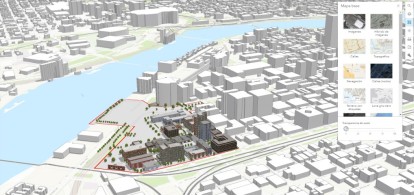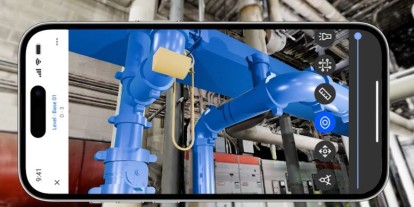Blog / BIM & Construction Management
SocioBIM: A social BIM approach to BIM projects
Categories

The construction sector is in constant evolution, with an ongoing commitment to improving methods and project outcomes. In its continuous pursuit of efficiency and quality, the construction industry is incorporating new technologies, including Building Information Modeling (BIM), which plays a crucial role.
During my doctoral research, which focused on the continuity of building information throughout design, construction, and facility management stages in BIM projects. I encountered a concept known as SocioBIM, or social BIM. This concise article aims to introduce and explore this emerging concept within the construction context. SocioBIM is an innovative approach aimed at promoting collaboration and integration among various stakeholders, including occupants, throughout the construction process.
SocioBIM: going beyond the traditional technical and architectural aspects
This idea goes beyond the traditional technical and architectural aspects of construction to focus on social interactions and active involvement of the
involved parties. It acknowledges the significance of occupants in project success by involving them from the early design stages, fostering a sense of ownership and commitment to the building.
This approach encourages collaboration and integration of occupants, in the construction process (Das et al., 2014). In fact, post-occupancy evaluations based on SocioBIM have proven useful in various scenarios, such as evaluating learning spaces, concluding that this technology enhances occupants' accountability (Abisuga et al., 2018). Moreover, SocioBIM transforms "occupants" (passive recipients) into "inhabitants," allowing them to feel a sense of belonging and engagement with the building (Shoolestani et al., 2015).
Furthermore, this concept is also tied to a more sustainable approach to building management (Mousa et al., 2016). Beyond occupants, the concept
of social BIM has been also applied in collaborative building design and establishing relationships among stakeholders. SocioBIM integrates situational awareness into the methodological aspects of BIM to promote co-creation (Adamu et al., 2015). Some studies highlight that this concept also encompasses the social dimension of BIM, which represents collaboration among different actors in the system, also known as "collaborative BIM" or "integrated BIM" (iBIM) (Suwal et al., 2013).
SocioBIM: An efficient approach to guarantee project success
It is interesting to explore the different dimensions of SocioBIM and its impact on the construction process examining the benefits it can bring, such as enhancing occupants' accountability, creating a sustainable environment, and promoting collaboration among project stakeholders.
This introduction to SocioBIM serves the purpose of emphasizing the potential for constructing buildings that prioritize not only sustainability and practicality but also strongly prioritize the comfort and necessities of the people who occupy them. Notably, our observations reveal that in the context of BIM projects, the integration of inhabitants, their concerns, and their needs into the design, construction, and management processes could have a positive influence on the continuous flow of information and knowledge pertaining to the building.
Thus, new information technologies like BIM offer inhabitants of smart cities a co-responsibility position in urban fabrication and management, directly connecting them to these processes (Souami, 2017). In a construction project, there exist two distinct groups of individuals who are affected by the outcome: the building owners and the occupants. The owner's interests span a wide spectrum, encompassing economic, technical, and administrative aspects, among others.
Conversely, the occupants bring additional considerations into
the mix, such as the concept of comfort. It is imperative that the construction project addresses the needs of both these categories of stakeholders.
Presently, specific certifications like WELL or HQE are formulated with criteria designed to quantify the well-being of the inhabitants. In our analyses, we
also relied on the role of the built environment as a collective action, as there is currently a lack of analysis of social practices in a comprehensive vision, and a lack of deep reflection on the intentions and purposes of user groups, including occupants (Fenker, 2017).
Consequently, our focus shifted towards scrutinizing the influence of Building Information Modeling on users and end-users, thereby facilitating a more comprehensive understanding of its societal implications.
We can deduce that while the concepts of social BIM or socioBIM or iBIM might not be completely matured or precisely outlined, it remains crucial to consider building occupants as integral beneficiaries in every construction endeavor.
In essence, incorporating occupants into a BIM initiative could facilitate the attainment of specific environmental certifications. This inclusion
transforms the inhabitant into an invested party, capable of engaging with the project across all stages, thereby establishing connections among them.
Additionally, collecting their perspectives during the operational phase has the potential to enhance management and maintenance procedures, aligning them more effectively with the building's actual conditions and the needs of its users.
Bibliographie :
Abisuga, O., Wang, C., & Kamardeen, I. (2018). Towards Conceptualization of SocioBIM-based Post-occupancy Evaluation Framework for Learning Spaces. In Innovative Production and Construction (p. 17‑38). WORLD SCIENTIFIC.
https://doi.org/10.1142/9789813272491_0002
Adamu, Z. A., Emmitt, S., & Soetanto, R. (2015). Social BIM : Co-creation with shared situational awareness. Journal of Information Technology in Construction, 20,230‑252.
Das, M., Cheng, J. C. P., & Shiv Kumar, S. (2014). BIMCloud : A Distributed Cloud-Based Social BIM Framework for Project Collaboration. 41‑48.
https://doi.org/10.1061/9780784413616.006
Fenker, M. (2017). L’espace comme enjeu de gestion. Éléments pour un élargissement du questionnement sur la ville durable. Cahiers RAMAU. Revue du Réseau activités et métiers de l’architecture et de l’urbanisme, 8, 28‑46.
Mousa, M., Luo, X., & McCabe, B. (2016). Utilizing BIM and Carbon Estimating Methods for Meaningful Data Representation. Procedia Engineering, 145, 1242‑1249.
https://doi.org/10.1016/j.proeng.2016.04.160
Shoolestani, A., Shoolestani, B., Froese, T. M., & Vanier, D. J. (2015). SocioBIM : BIM-to-end user interaction for sustainable building operations and facility asset management.
https://doi.org/10.14288/1.0076332
Souami, T. (2017). De l’écoquartier à la ville intelligente. In A. Euzen, L. Eymard, & F. Gaill (Éds.), Le développement durable à découvert (p. 112‑113). CNRS Éditions.
https://doi.org/10.4000/books.editionscnrs.10663
Suwal, S., Jäväjä, P., & Porkka, J. (2013). Social BIM perspectives. Proceedings of the 30th CIB W78 International Conference, 9‑12.
Related module





